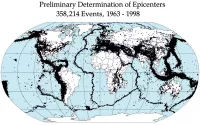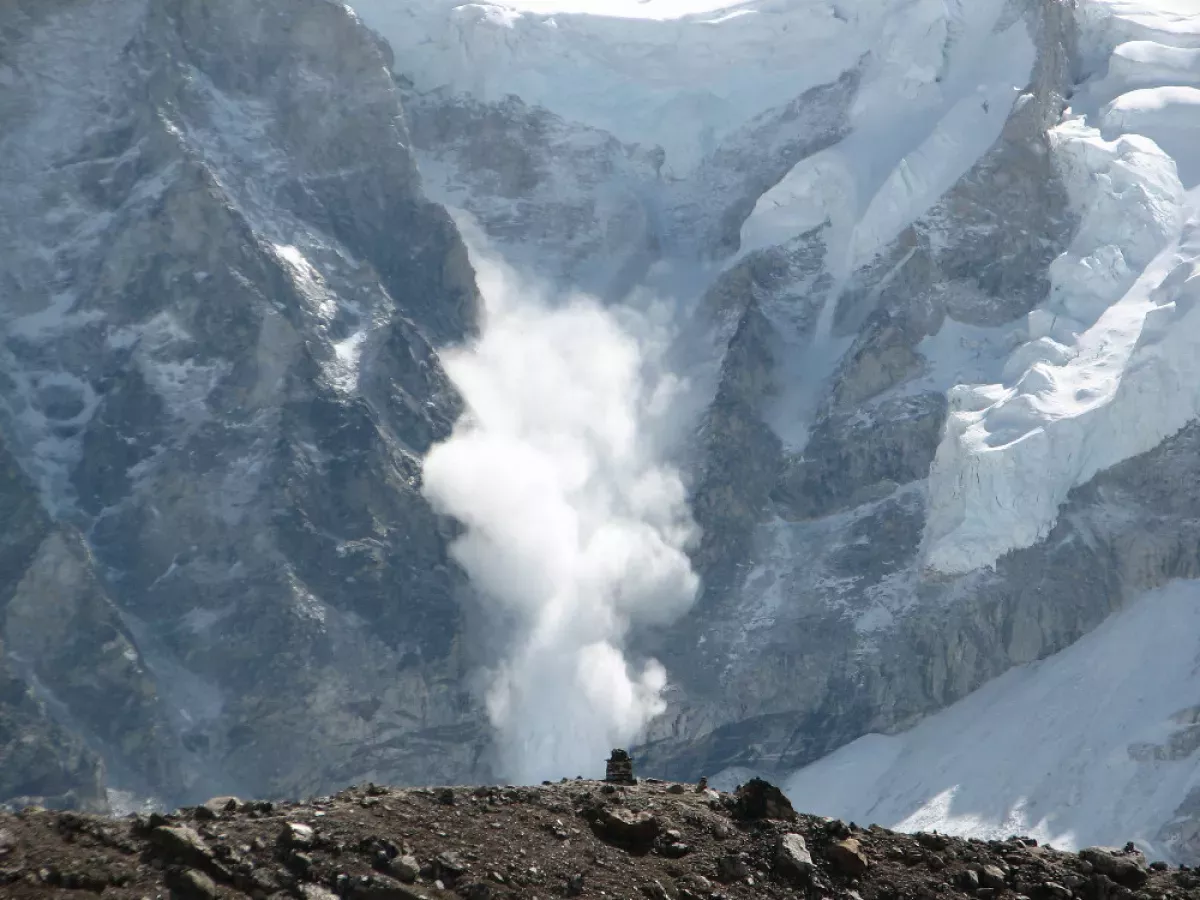An avalanche is a fast-moving flow of snow down a slope. They occur spontaneously due to factors like heavy snowfall or a weakened snowpack, or they can be triggered by external forces, including humans, animals, or earthquakes. Avalanches consist mainly of snow and air, but large ones can incorporate ice, rocks, and trees. They pose significant dangers in mountainous regions.
March 1910: Deadly Avalanches in Cascade and Selkirk Mountains
In March 1910, two avalanches occurred. The Wellington avalanche on March 1 killed 96 in Washington state, United States, and three days later, the Rogers Pass avalanche killed 62 railroad workers in British Columbia, Canada.
December 1916: Avalanches during World War I
In December 1916, approximately 10,000 men from both sides died in avalanches during World War I, part of an estimated 40,000 to 80,000 soldiers who died from avalanches during the mountain campaign in the Alps at the Austrian-Italian front, many of which were caused by artillery fire.
1924: Lagotala models avalanche behaviour
In 1924, Professor Lagotala created a method to model avalanche behavior in preparation for the Winter Olympics in Chamonix.
1950: Avalanche fatalities in the United States
In 1950, Avalanche fatalities in the United States started being recorded and up to 2021, 1,169 people died in avalanches.
1951: Avalanche fatalities in the United States
In 1951, Avalanche fatalities in the United States continued being recorded and up to 2021, 1,169 people died in avalanches.
1951: Winter of Terror: Fatalities
The series of avalanches in 1951, termed the Winter of Terror, killed around 265 people.
1955: Voellmy publishes work on avalanche force
In 1955, A. Voellmy popularized Lagotala's avalanche model after publishing "Ueber die Zerstoerungskraft von Lawinen" (On the Destructive Force of Avalanches).
March 1968: Biały Jar Avalanche
On March 20, 1968, the avalanche in Biały Jar swept away 24 people, killing 19 including 13 Russians, 4 East Germans, and 2 Polish citizens. 1,100 people took part in the rescue operation.
1990: Lenin Peak Avalanche
In 1990, an earthquake triggered a large avalanche on Lenin Peak (now Kyrgyzstan), wiping out a mountain climbing camp and killing forty-three climbers.
April 1993: Adoption of Avalanche Risk Scale in Europe
In April 1993, Europe adopted a standardized avalanche risk scale, replacing earlier non-standard national schemes.
1993: Bayburt Üzengili Avalanche
In 1993, the Bayburt Üzengili avalanche in Üzengili, Bayburt, Turkey, killed 60 individuals.
1996: Jamieson et al. Study on Avalanche Causes
In a 1996 study, Jamieson et al. found that 83% of avalanches in recreational settings were caused by those involved, while residential, industrial, and transportation accidents were due to natural avalanches.
1999: Galtür Avalanche Disaster Studies
Following the 1999 Galtür avalanche disaster, scientific studies using radar confirmed the hypothesis that a saltation layer forms between the surface and the airborne components of an avalanche, which can also separate from the bulk of the avalanche.
1999: Wet Snow Avalanches Described
In 1999, McClung described wet snow avalanches as a low velocity suspension of snow and water, confined to the track surface. Their destructive force comes from their large mass and density despite their low speed, and they occur in water-saturated snowpacks at the melting point.
1999: Montroc Avalanche
In 1999, a large avalanche in Montroc, France, involving 300,000 cubic meters of snow sliding at 100 km/h on a 30° slope, killed 12 people in their chalets. The mayor of Chamonix was convicted of second-degree murder but received a suspended sentence.
December 2000: Glory Bowl Avalanche
On December 1, 2000, the Glory Bowl Avalanche occurred on Mt. Glory in Wyoming, United States, when Joel Roof, snowboarding recreationally, triggered the avalanche and was carried nearly 2,000 feet to the base of the mountain and was killed.
2001: Global Avalanche Fatalities
In 2001, it was reported that globally an average of 150 people die each year from avalanches.
January 2003: Tatra Mountains Avalanche
On January 28, 2003, the Tatra Mountains avalanche swept away nine out of a thirteen-member group heading to the summit of Rysy in the Tatra Mountains. The participants of the trip were students from the I Leon Kruczkowski High School in Tychy and individuals associated with the school's sports club.
May 2003: Avalanche Risk Scale Update
In May 2003, the descriptions for the avalanche risk scale adopted in Europe were updated to enhance uniformity.
April 2006: North American Avalanche Fatalities
By April 2006, 445 people had died in avalanches throughout North America over the preceding 11 years.
2007: D2FRAM Validation
As of 2007, the D2FRAM (Dynamical Two-Flow-Regime Avalanche Model) was still undergoing validation.
2020: Avalanche fatalities in the United States
In 2020, Avalanche fatalities in the United States continued being recorded and up to 2021, 1,169 people died in avalanches.
2021: Avalanche fatalities in the United States
In 2021, there have been 1,169 recorded avalanche fatalities since 1950 in the United States.
July 2022: Marmolada Glacier Avalanche
On July 3, 2022, a serac collapsed on the Marmolada Glacier in Italy, causing an avalanche that killed 11 alpinists and injured eight.
Mentioned in this timeline

Radar is a radiodetermination system using radio waves to detect...
Germany officially the Federal Republic of Germany is a Western...

An earthquake is the shaking of the Earth's surface caused...
France officially the French Republic is primarily located in Western...
Canada is a North American country the second largest in...
Turkey officially the Republic of T rkiye is a transcontinental...
Trending

1 month ago Martha Stewart's Holiday Collection Returns for 2025: Decor and Dining Favorites!

6 months ago Adou Thiero: From Arkansas Project to NBA Draft Prospect in 2025

1 month ago Jason Bateman's Sister Justine; Amy Poehler's SNL Chimpanzee Scare Detailed.
7 months ago Savannah Guthrie and Craig Melvin Temporarily Replaced on Today Show: Here's Why
26 days ago SeaWorld and Busch Gardens Face DOJ Probe Over Walker Ban Policy.
22 days ago Marcus Freeman: Notre Dame coach considered for Giants head coaching vacancy in NFL.
Popular

XXXTentacion born Jahseh Dwayne Ricardo Onfroy was a controversial yet...

Ben Shapiro is a prominent American conservative political commentator media...

Candace Owens is an American conservative political commentator and author...

William Franklin Graham III commonly known as Franklin Graham is...

Tucker Carlson is an American conservative political commentator known for...
The Kennedy Center Honors are annual awards recognizing individuals and...
